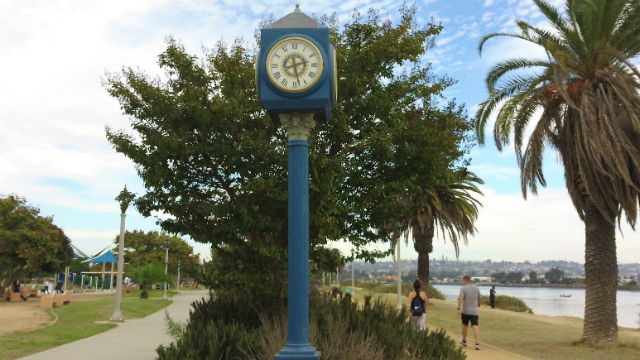 The historic Rotary International clock in Liberty Station. (File photo by Chris Jennewein/Times of San Diewgo)
The historic Rotary International clock in Liberty Station. (File photo by Chris Jennewein/Times of San Diewgo)
Daylight Saving Time for 2025 ends at 2 a.m. on Sunday, Nov. 2, in California, with clocks resetting to 1 a.m. Pacific Standard Time.
Most of the United States will “fall back” to Standard Time on Sunday. Only Hawaii, most of Arizona, American Samoa, Guam, Puerto Rico and the Virgin Islands do not change with the rest of the country as they are always on Standard Time.
Arizona opts out of Daylight Saving Time as an energy-saving measure for the desert cities of Phoenix and Tucson, while Hawaii and other islands near the equator do not experience large variations in daylight.
Americans are divided on whether changing time twice a year is a good thing. A poll by the The Associated Press-NORC Center for Public Affairs Research last month found that only 12% of U.S. adults favor the current system, while 47% are opposed and 40% are neutral.
President Trump has called for making daylight saving time permanent, but legislation to achieve this is stalled in Congress. So for now, we need to keep changing our clocks.
The change offers an extra hour of sleep. It’s also a reminder to make sure smoke detectors have fresh batteries and that sprinklers aren’t wasting water.
The Automobile Club of Southern California warns drivers to be on the lookout for children and other pedestrians, since it will be dark an hour earlier in the evenings.
If you’re not sure about the correct time, visit Time.Gov for the official word from the U.S. Naval Observatory‘s “master clock.”
READ NEXT

